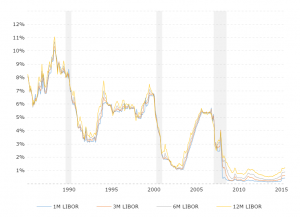Satisfying credit - All housing and installment debt payments need to have been made on time in the last 12 months; there are no more than two 30-day late home loan or installation payments in the previous 24 months, and there is no significant bad credit on revolving accounts in the last 12 months.
If no extenuating circumstances can be documented, the debtor may not certify at all or the lending institution may need a large quantity of the primary limitation (if available) to be taken into a Life Expectancy Set Aside (LESA) for the payment of property charges (home taxes, property owners insurance coverage, etc.).
The fixed-rate program comes with the security of an interest rate that does not change for the life of the reverse home mortgage, but the interest rate is normally greater at the start of the loan click here than an equivalent adjustable-rate HECM. Adjustable-rate reverse home loans typically have rates of interest that can change on a month-to-month or yearly basis within particular limits.
The initial interest rate, or IIR, is the actual note rate at which interest accumulates on the exceptional loan balance on an annual basis. For fixed-rate reverse mortgages, the IIR can never ever alter. For adjustable-rate reverse home loans, the IIR can change with program limitations as much as a life time rate of interest cap.
The EIR is often different from the real note rate, or IIR. The EIR does not figure out the amount of interest that accrues on the loan balance (the IIR does that). The total swimming pool of money that a customer can get from a HECM reverse home loan is called the primary limit (PL), which is determined based upon the optimum claim amount (MCA), the age of the youngest customer, the expected rate of interest (EIR), and a table to PL aspects published by HUD.
A Biased View of How Many Types Of Reverse Mortgages Are There
Many PLs are generally in the variety of 50% to 60% of the MCA, but they can often be higher or lower. The table listed below provides examples of primary limits for numerous ages and EIRs and a home value of $250,000. Debtor's age at origination Expected interest rate (EIR) Principal limitation aspect (since Aug.
5% 0. 478 $119,500 65 7. 0% 0. 332 $83,000 75 5. 5% More help 0. 553 $138,250 75 7. 0% 0. 410 $102,500 85 5. 5% 0. 644 $161,000 85 7. 0% 0. 513 $128,250 The primary limit tends to increase with age and reduce as the EIR rises. To put it simply, older customers tend to receive more money than more youthful debtors, but the overall quantity of cash available under the HECM program tends to reduce for any ages as rate of interest rise.
Any extra profits readily available can be distributed to the borrower in numerous ways, which will be detailed next. The cash from a reverse mortgage can be dispersed in 4 methods, based on the debtor's financial requirements and objectives: Lump amount in cash at settlement Monthly payment (loan advance) for a set number of years (term) or life (period) Line of credit (similar to a home equity line of credit) Some mix of the above Note that the adjustable-rate HECM provides all of the above payment options, but the fixed-rate HECM just offers swelling amount.
This indicates that debtors who go with a HECM line of credit can possibly gain access to more money in time than what they initially got approved for at origination. The line of credit development rate is identified by including 1. 25% to the initial rates of interest (IIR), which indicates the line of credit will grow quicker if the interest rate on the loan increases.
Due to the fact that numerous customers were taking full draw lump amounts (frequently at the motivation of lending institutions) at closing and burning through the money quickly, HUD looked for to protect customers and the viability of the HECM program by restricting the amount of earnings that can be accessed within the first 12 months of the loan.
7 Easy Facts About What Fico Scores Are Used For Mortgages Explained
Any remaining available profits can be accessed after 12 months. If the total compulsory obligations surpass 60% of the principal limit, then the customer can draw an extra 10% of the primary limit if available. The Real Estate and Economic Recovery Act of 2008 provided HECM mortgagors with the opportunity to buy a new principal house with HECM loan continues the so-called HECM for Purchase program, effective January 2009.
The program was designed to enable the elderly to purchase a brand-new principal home and obtain a reverse mortgage within a single deal by getting rid of the need for a 2nd closing. Texas was the last state to allow for reverse home loans for purchase. Reverse mortgages are often slammed over the issue of closing expenses, which can sometimes be expensive.
Thinking about the constraints enforced upon HECM loans, they are equivalent to their "Forward" contemporaries in overall costs. which credit report is used for mortgages. The following are the most typical closing costs paid at closing to obtain a reverse home mortgage: Therapy charge: The initial step to get a reverse mortgage is to go through a therapy session with a HUD-approved counselor.
Origination charge: This is charged by the lender to set up the reverse home loan. Origination fees can differ widely from lender to lending institution and can vary from absolutely nothing to a maximum of $6,000. Third-party fees: These fees are for third-party services hired to complete the reverse mortgage, such as appraisal, title insurance, escrow, government recording, tax stamps (where suitable), credit reports, and so on.
The IMIP safeguards lenders by making them whole if the house costs the time of loan repayment for less than what is owed on the reverse home mortgage. This protects customers as well because it means they will never ever owe more than their house is worth. As of 1/2019, the IMIP is now 2% of limit claim amount (Either the appraised value of the home as much as a maximum of $726,535) The yearly MIP (home mortgage insurance coverage premium) is.

All about Which Credit Report Is Used For Mortgages

The huge majority of closing costs normally can be rolled into the new loan amount (except when it comes to HECM for purchase, where they're included in the deposit), so they don't need to be paid of pocket by the customer. The only exceptions to this guideline may be the counseling cost, appraisal, and any repairs that might require to be done to the house to make it completely compliant with the FHA standards prior to completing the reverse mortgage.
These files can be used to compare loan deals from various lending institutions. There are 2 continuous expenses that might apply to a reverse home loan: annual home loan insurance and servicing charges. The IMIP,( on time Initial Home loan Insurance coverage Premium) of 2% of the assessed worth http://knoxxbns970.tearosediner.net/how-reverse-mortgages-and-how-they-work-can-save-you-time-stress-and-money is charged at closing. The IMIP is the biggest cost connected with an FHA HECM or Reverse Mortgage.
The yearly mortgage insurance is charged by FHA to guarantee the loan and accrues each year at a rate of. 50% of the loan balance. Annual mortgage insurance coverage does not need to be paid of pocket by the borrower; it can be allowed to accrue onto the loan balance over time.